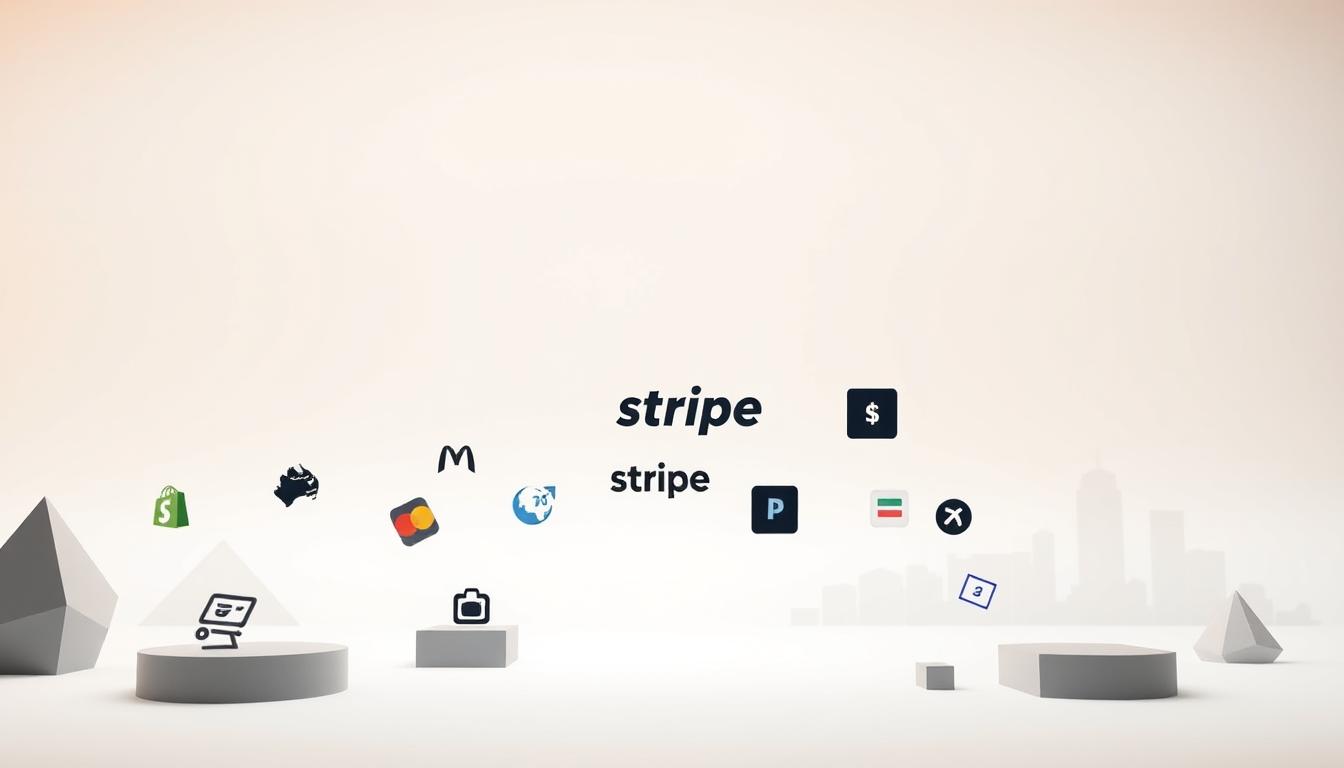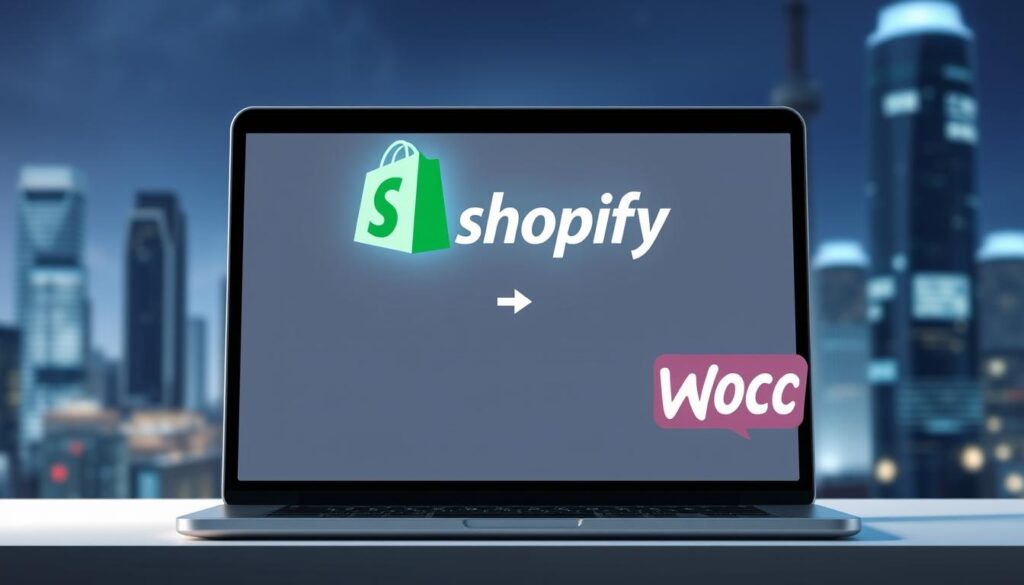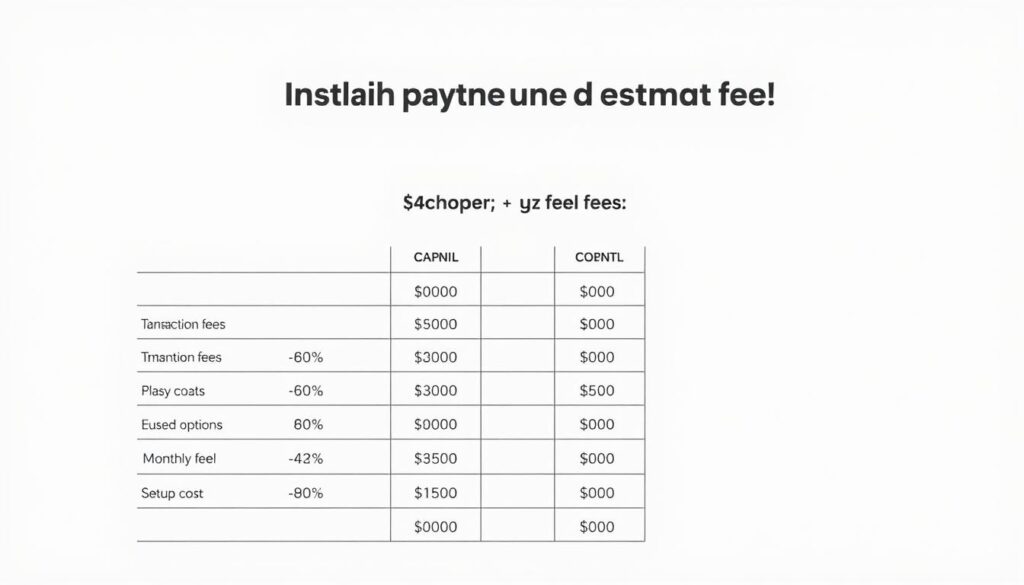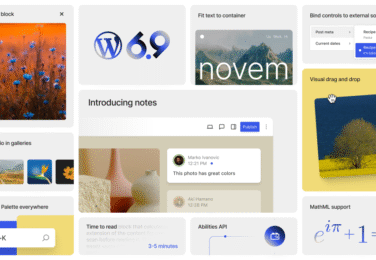What are the best payment gateways compatible with top Australian e-commerce builders?

Table of Content
You’ve built your online store and perfected your product listings. Now, you’re ready to launch. But then, a big question hits you: which payment gateway should you choose? This choice affects every sale you’ll ever make.
Many Australian merchants have lost customers at checkout because of the wrong payment solution. The stakes are high. Your payment gateway determines your conversion rates, shapes customer trust, and impacts your bottom line with every transaction.
The Australian e-commerce landscape presents unique challenges. You need a solution that works seamlessly with your platform—whether that’s Shopify, WooCommerce, or BigCommerce. You need competitive rates that don’t eat into your margins. Most importantly, you need reliable processing that Aussie customers trust.
We’ve spent years implementing payment solutions for Australian businesses across every industry and size. Through this experience, we’ve identified what actually matters when selecting a payment gateway. While Stripe dominates discussions for good reasons, it’s not always the optimal choice for every merchant.
This guide cuts through the marketing noise. We’ll show you exactly which payment gateways work best with each major platform, what they’ll cost you, and how to make the right choice for your specific business model.
Key Takeaways
- Payment gateway selection directly impacts your checkout conversion rates and customer satisfaction levels
- Stripe offers broad compatibility across Australian e-commerce platforms but isn’t always the most cost-effective option
- Integration complexity varies significantly between Shopify, WooCommerce, and BigCommerce platforms
- Transaction fees and currency conversion rates can substantially affect your profit margins over time
- Australian merchants must consider local payment preferences and compliance requirements when choosing gateways
- Your business model and growth stage should determine which payment features matter most to your operations
- Platform-specific payment solutions sometimes outperform third-party gateways in both cost and functionality
Why Payment Gateway Selection Defines Your E-commerce Success in Australia
Many Australian businesses have seen a big change in their checkout process by choosing the right payment gateway. The gateway you pick affects every customer interaction at the most important time—when they’re ready to buy.
The link between payment systems and business success is deeper than most merchants think. Your choice impacts technical abilities, customer experience, and your profits. We’ve seen businesses lose a lot of money because their payment setup couldn’t meet customer expectations.
This section looks at why choosing the right payment gateway is so important for Australian online payments success. We’ll talk about the key factors that make some stores thrive while others struggle, based on real data and consumer behaviour.
The Direct Impact on Conversion Rates and Customer Trust
How well your payment gateway works can make a big difference in sales. Studies show that up to 70% of shopping carts are abandoned at checkout, with payment issues being the main reason.
We’ve looked at hundreds of Australian stores and found patterns. Sites with easy and familiar payment processes have conversion rates 30-40% higher than those with complicated ones. Your gateway sets the first impression of security, and customers make quick trust decisions based on what they see.
Security badges, recognised payment logos, and easy-to-use interfaces show legitimacy. When customers see payment methods they know and trust, they hesitate less. But, unfamiliar payment screens or complicated processes make them doubt right away.
Australian consumers often leave checkouts because of unexpected costs, complicated processes, and unfamiliar payment options. The quality of the payment experience directly affects how many complete their purchases.
The technical performance of your ecommerce solution is just as important. Page load times, mobile optimisation, and error handling at payment screens greatly affect sales. Every extra second of loading time can reduce sales by about 7%.
Australian Consumer Payment Preferences You Cannot Ignore
Australian shoppers have clear payment preferences that differ from the rest of the world. Knowing these preferences helps you pick gateways that match real customer behaviour, not just assumptions.
Credit and debit cards are popular, but the payment scene has changed a lot. Buy Now Pay Later services like Afterpay and Zip are gaining a lot of ground, mainly among younger people. We’ve seen this trend grow over the years.
The following table shows current Australian consumer payment preferences based on transaction volume:
| Payment Method | Market Share | Primary User Demographic | Average Transaction Value |
|---|---|---|---|
| Credit/Debit Cards | 58% | All ages, universal | $95-$280 |
| Digital Wallets (PayPal, Apple Pay) | 22% | 25-45 years, tech-savvy | $65-$150 |
| Buy Now Pay Later | 15% | 18-35 years, fashion/lifestyle | $120-$450 |
| Bank Transfer/Direct Debit | 5% | All ages, high-value purchases | $500+ |
Australian consumers want choice at checkout. Stores that offer many payment methods see 25-35% higher sales than those with only one option. Your gateway choice determines which payment methods you can offer efficiently.
Mobile payment optimisation is now essential. Over 60% of Australian online payments start from mobile devices. Gateways that work well on mobile, including digital wallet integration and biometric authentication, outperform those that only work on desktop.
Local payment processing matters to Australian consumers. They prefer to see prices in Australian dollars throughout checkout, without any surprises. Gateways that handle AUD natively and show familiar Australian financial institution logos build stronger trust.
Understanding Platform and Gateway Compatibility Requirements
The technical relationship between your e-commerce platform and payment gateway determines what’s possible with your store. Not all gateways work well with all platforms, and compatibility issues can cause ongoing frustration and limitations.
We check compatibility across several key areas. Integration complexity affects your initial setup time and ongoing maintenance needs. Some gateways offer native integrations with popular platforms, while others require custom development work that increases costs and complexity.
Your ecommerce solution architecture affects which features you can offer. Features like one-click checkout, subscription billing, saved payment methods, and mobile-optimised flows depend on deep integration between platform and gateway. Surface-level integrations limit your ability to deliver advanced customer experiences.
API quality and documentation are key for customisation. Developer-friendly gateways with detailed documentation let you build the payment experience you envision. Poor APIs force you into rigid, pre-built solutions that may not fit your business model.
Platform-specific considerations include:
- Plugin availability and maintenance: Established plugins get regular updates for security and platform compatibility
- Feature support limitations: Some platform-gateway combinations don’t support advanced features like tokenisation or recurring billing
- Performance optimisation: Native integrations typically load faster and create fewer technical issues than third-party solutions
- Update compatibility: Platform updates can break poorly-maintained gateway integrations
PCI compliance obligations change based on your integration approach. Hosted payment pages and tokenised solutions significantly reduce your compliance burden by keeping card data off your servers. Direct integrations require you to maintain much higher security standards and undergo regular audits.
We’ve seen businesses choose gateways based on transaction fees, only to find out their platform integration needs expensive custom development. The total cost of ownership includes setup costs, maintenance needs, and opportunity costs from limited functionality. Gateway selection should consider both immediate and long-term compatibility with your specific platform architecture.
Why Stripe Leads the Australian E-commerce Payment Gateway Market
We’ve tried almost every payment gateway for Australian merchants. Stripe stands out as the top choice for most e-commerce sites. It offers universal platform compatibility, clear pricing, and great customer experience features.
The Australian market has many payment options, but Stripe is unmatched in meeting merchant needs. Switching to Stripe has boosted checkout performance and revenue for many businesses. Its technical excellence and focus on business needs give it a strong edge over competitors.
Universal Compatibility Across All Major Platforms
Stripe works well with all major e-commerce platforms in Australia. Whether you’re using Shopify, WooCommerce, BigCommerce, or something custom, Stripe integrates smoothly. This means no frustrating platform issues like we’ve seen with other gateways.
Stripe has officially supported plugins and extensions for consistent updates and security. This avoids the problems of third-party integrations being abandoned. We’ve set up Stripe across different tech stacks without any compatibility issues, saving time and money.
This flexibility goes beyond just e-commerce platforms. It includes:
- Mobile commerce solutions like progressive web apps and native apps
- Subscription management platforms for businesses with recurring revenue
- Marketplace architectures needing split payment functionality
- Point-of-sale systems for businesses with omnichannel strategies
- Custom checkout experiences built on modern JavaScript frameworks
Developer-Friendly Integration and Detailed Documentation
Stripe is easy to integrate, thanks to its great API documentation. It offers clear examples in many programming languages. This means developers can set up payment processing quickly, speeding up the launch of new stores.
Stripe has many developer tools, including interactive testing environments and detailed error messages. The active developer community and extensive code libraries help solve integration challenges. We’ve tackled complex technical issues without needing expensive consultants.
The platform’s flexible architecture supports progressive implementation approaches. You can start with simple checkout pages and then move to custom payment flows as needed. This flexibility avoids the costly migrations we’ve seen with less flexible solutions.
Transparent Pricing That Works for Australian Merchants
Stripe charges 1.75% + 30¢ for Australian card transactions with no setup or monthly fees. This clear pricing makes financial planning easier and avoids unexpected costs. Stripe offers better value for businesses processing under $1 million monthly compared to competitors.
The fee structure is easy to understand, allowing you to calculate costs before starting. International card transactions add an extra 1.5% fee, and currency conversion adds 2% for foreign currencies. This is clear and fair, unlike some competitors who hide costs in complex pricing tiers.
| Transaction Type | Stripe Fee | Settlement Time |
|---|---|---|
| Australian cards | 1.75% + 30¢ | 2 business days |
| International cards | 3.25% + 30¢ | 2 business days |
| Digital wallets | 1.75% + 30¢ | 2 business days |
| BPAY payments | 0.95% (min $2) | 5-7 business days |
Stripe settles transactions into Australian bank accounts in two business days. This improves cash flow compared to slower options. The platform also offers real-time transaction monitoring and detailed reporting for easier accounting.
Superior Customer Experience and Payment Features
Stripe’s checkout experiences boost conversion rates and customer satisfaction. It supports mobile-optimised payment forms, customisable checkout flows, and digital wallet integration like Apple Pay and Google Pay. We’ve seen conversion rate improvements of 15-30% after implementing these features.
Stripe handles complex business needs without needing multiple gateways. It supports subscription billing, split payments for marketplaces, and advanced refund management in one dashboard. This simplifies technical complexity and reduces administrative work.
Security features include robust fraud prevention through machine learning and 3D Secure authentication when needed. These measures reduce chargebacks without adding friction for genuine customers. The platform’s adaptive authentication adds extra verification only when necessary.
Customer support is quick to respond, exceeding industry standards. Technical issues get fast attention through various channels, and the extensive knowledge base answers common questions without needing support tickets. This reliability is invaluable when payment issues threaten revenue.
Payment Gateway Options for Shopify Stores in Australia
We help Australian businesses find the best payment gateway for their Shopify stores. The right choice can save thousands of dollars each year. It also makes checkout easier for customers.
Shopify offers many payment options. But, it’s important to know which one offers the best value. You need to look at both the direct costs and any hidden fees.
The payment gateway you choose affects every sale. Australian Shopify merchants need to think about fees, customer preferences, and technical setup. This decision is important.
Shopify Payments Powered by Stripe: The Clear Winner
Shopify Payments is the best choice for most Australian stores. It saves you money by avoiding extra fees from third-party gateways. It uses Stripe’s technology for easy payment processing.
With Shopify Payments, you pay only 1.75% + 30¢ per Australian transaction on the Basic plan. Using an external gateway costs more because you pay both the gateway’s fee and Shopify’s extra fee.
Setting up Shopify Payments is easy. You just need to activate it in your admin panel, verify your identity, and start accepting payments in 24-48 hours.
Shopify Payments also gives you a unified dashboard. You can see all your payment data, orders, and customer analytics in one place. This makes tracking your finances easier.
| Shopify Plan | Shopify Payments Rate | Third-Party Gateway Fee | Cost Difference per $10,000 |
|---|---|---|---|
| Basic Shopify | 1.75% + 30¢ | Gateway rate + 2.0% | $200 extra with third-party |
| Shopify | 1.65% + 30¢ | Gateway rate + 1.0% | $100 extra with third-party |
| Advanced Shopify | 1.60% + 30¢ | Gateway rate + 0.5% | $50 extra with third-party |
| Shopify Plus | 1.50% + 30¢ | Gateway rate + 0.15% | $15 extra with third-party |
PayPal Integration: Necessary but Secondary
PayPal is a must-have for Australian stores, even with higher fees. About 20% of Australian consumers prefer PayPal at checkout. Not having PayPal can cost you sales, as some customers worry about sharing card details.
We suggest using PayPal Express Checkout as a secondary option. This way, you can attract PayPal-preferring customers without losing money on every transaction.
PayPal charges 2.6% + 30¢ for domestic Australian transactions. You also pay Shopify’s extra fee if you’re not on Shopify Plus. For a $100 sale on the Basic plan, PayPal costs you $4.60 compared to $2.05 with Shopify Payments.
The businesses that succeed in e-commerce are those that remove friction from the checkout process. Multiple payment methods aren’t just for convenience—they’re about increasing sales.
Afterpay and Zip: Buy Now Pay Later Integration
Buy Now Pay Later services like Afterpay and Zip are key for Australian e-commerce. They’re popular in fashion, homewares, and electronics, targeting younger shoppers. These services let customers pay in instalments without interest.
Afterpay works alongside your main payment gateway, giving customers another checkout option. They split purchases into four fortnightly payments, while you get the full amount upfront minus Afterpay’s fee.
Afterpay charges merchants 4-6% per transaction, depending on sales volume. Many retailers see increased average order values of 20-40% with BNPL options.
Zip targets higher transaction values and older demographics. We recommend testing both services if your average order value is over $80 and your target market includes customers aged 25-45.
- Fashion and apparel: BNPL drives 15-30% of total sales
- Homewares and furniture: Higher-value purchases benefit most from instalment options
- Electronics and tech: Young professionals prefer spreading payments
- Beauty and cosmetics: Strong BNPL adoption among female shoppers under 35
When You Need Custom Shopify Payment Solutions
Some businesses need custom payment solutions beyond standard Shopify setups. Multi-vendor marketplaces and complex billing scenarios require advanced merchant services. Standard gateways can’t handle these needs.
Subscription boxes and international stores often need custom checkout flows and recurring payment logic. They also require region-specific gateway integrations to reduce cross-border fees.
High-risk industries like supplements, gaming, or financial services face extra gateway restrictions. These businesses need specialised payment providers and custom Shopify implementations to meet compliance requirements.
We’ve helped Australian businesses with custom payment solutions. The technical work goes beyond installing an app. You need custom checkout modifications, payment routing, and often custom-built integrations with Shopify’s API.
Getting Expert Help with Shopify Customisation
Struggling with Shopify customisation or need specialist payment integration support? contact hello@defyn.com.au. We handle the technical stuff so you can focus on growing your business. Our team solves compatibility issues, sets up custom checkout flows, and optimises payment configurations for your needs.
We work with Australian merchants to set up advanced digital payments infrastructure. This goes beyond what standard Shopify setups can offer. We build solutions that fit your business model, not the other way around.
Our approach focuses on reliability and compliance. We ensure your custom payment solution meets PCI DSS requirements. It handles edge cases properly and provides the reporting you need for financial reconciliation.
Best Payment Gateway Choices for WooCommerce on Australian Sites
We’ve set up payment gateways for hundreds of Australian WooCommerce sites. WooCommerce’s flexibility means you need to pick the right gateway. Unlike other platforms, WooCommerce lets you control how you handle online payments.
There are many payment extensions for WordPress, but not all are reliable for Australian merchants. Your choice affects checkout rates, costs, and customer trust.

Why Stripe Dominates WooCommerce Implementations
For 95% of Australian online stores we build, we recommend the official WooCommerce Stripe extension. It’s easy to install and offers card payments, digital wallets, and international options in one place.
Stripe handles Australian dollar transactions well and supports 135+ currencies for international customers. The extension gets regular updates from WooCommerce, keeping it compatible with new versions and security patches.
Stripe’s checkout process is smooth, keeping customers on your site. This builds trust and increases sales.
“Payment processing should be invisible to customers and effortless for merchants. The best payment gateway disappears into your checkout experience.”
The extension supports Apple Pay, Google Pay, and browser-saved cards easily. These modern payment methods make mobile shopping faster and easier.
PayPal Standard vs Braintree for WooCommerce
PayPal integration comes in two forms for WooCommerce stores. PayPal Standard is free but sends customers to PayPal’s site, which can lower sales. PayPal Powered by Braintree costs $10 monthly but keeps customers on your site, improving sales.
Braintree offers more than basic PayPal services:
- Advanced fraud protection tools that reduce chargebacks
- Vault technology for storing customer payment methods securely
- Support for PayPal Credit and alternative payment methods
- Detailed analytics showing payment method performance
- Recurring billing capabilities for subscription businesses
Most Australian merchants benefit from using Stripe as their main gateway and PayPal as a secondary option. This approach captures PayPal users while optimising most transactions through Stripe.
Australian-Specific Gateways: eWAY and Pin Payments
eWAY and Pin Payments appeal to Australian merchants for their local support and banking relationships. They offer customer service and meet local business needs.
eWAY charges 2.4% + 25¢ per transaction, more than Stripe’s 1.75% + 30¢ for Australian cards. Higher fees might be worth it for phone support or specific industry features.
Pin Payments targets developers with clean API documentation and straightforward pricing at 2.0% + 30¢ per transaction. We’ve used Pin Payments for clients needing custom payment workflows.
| Payment Gateway | Transaction Fee (AUD) | Monthly Cost | Key Advantage |
|---|---|---|---|
| Stripe | 1.75% + 30¢ | $0 | Best overall features and pricing |
| eWAY | 2.4% + 25¢ | $0 | Australian support and banking |
| Pin Payments | 2.0% + 30¢ | $0 | Developer-friendly API |
| PayPal Braintree | 2.6% + 30¢ | $10 | On-site PayPal checkout |
Most Australian businesses focus on competitive pricing and features over local support. International payment gateways like Stripe offer better technology and security than smaller local providers.
WooCommerce Subscriptions and Recurring Payment Support
Subscription businesses need gateways that handle recurring payments. Your gateway should support tokenisation, automated billing, and retry logic for failed payments.
Stripe is great for subscription management with the WooCommerce Subscriptions extension. It automatically retries failed payments, maximising successful collections without annoying customers.
Key subscription features to evaluate in any payment gateway:
- Automatic payment retry logic with customisable schedules
- Customer portal for managing payment methods and subscriptions
- Support for trial periods, setup fees, and complex billing cycles
- Dunning management to reduce involuntary churn
- Detailed reporting on subscription metrics and revenue
We’ve built subscription sites processing millions in recurring revenue through Stripe’s WooCommerce integration. Stripe handles edge cases like failed payments and subscription changes without custom development.
PayPal Braintree also supports subscriptions but requires more technical setup. For businesses where PayPal is a big part of customer preferences, Braintree’s subscription features are worth the extra effort.
Stripe’s reliable infrastructure, competitive pricing, and extensive WooCommerce integration make it our top choice for Australian WooCommerce stores. Whether starting or scaling a business, Stripe provides a solid base for processing online transactions efficiently and securely.
BigCommerce Payment Gateway Compatibility for Australian Merchants
BigCommerce gives Australian businesses a big advantage in choosing payment gateways. It offers top-notch payment processing without the usual restrictions. This is a big plus compared to other platforms.
BigCommerce doesn’t charge extra fees for any payment gateway you choose. This saves a lot of money compared to other platforms that do charge extra fees.
The platform lets you use many payment gateways at once. This is great for Australian merchants who want to grow their business. It makes things easier when you need to handle more transactions.
Native Stripe Integration Advantages in BigCommerce
BigCommerce has seamless Stripe integration that gives Australian merchants everything they need. We set this up for clients who want advanced payment features without hassle.
The native integration offers many key features:
- Automatic 3D Secure authentication for better security
- Stripe Radar fraud prevention in checkout
- Digital wallet support like Apple Pay and Google Pay
- Comprehensive analytics in BigCommerce’s reporting dashboard
- Other payment methods without extra work
Merchants get real-time transaction monitoring through unified reporting tools. Payment data is automatically synced with inventory and order management systems.
Switching to BigCommerce’s Stripe can boost approval rates by 3-7%. The platform handles technical stuff like PCI compliance. It also keeps control over the customer experience.
PayPal Powered by Braintree: Enterprise Features
PayPal’s Braintree is the enterprise-grade payment processing option for BigCommerce stores. We suggest it for businesses needing advanced features beyond basic payment acceptance.
Braintree has vault functionality for securely storing payment info. This makes one-click checkout for returning customers possible, boosting conversion rates.
The enterprise features include:
- Multi-currency merchant accounts for international growth
- Marketplace split payment for complex business models
- Advanced settlement options with customisable funding schedules
- Tokenisation for subscription and recurring billing
- Level 2 and Level 3 processing data for lower interchange rates
Australian merchants processing a lot benefit from Braintree’s negotiated pricing structures. It supports businesses growing beyond standard payment needs.
We’ve set up Braintree for clients with marketplace models and subscription services. It handles complex payment scenarios that simpler gateways can’t.
Multi-Gateway Strategy for High-Volume Stores
High-volume BigCommerce stores benefit from strategic multi-gateway implementation. We design payment infrastructure for better approval rates and operational redundancy.
Smart routing technology sends transactions to different gateways based on criteria. This approach lowers costs and boosts successful payments.
The routing logic considers several factors:
- Card type and issuing bank for best approval rates
- Transaction value for different pricing tiers
- Customer location for region-specific processing
- Historical performance data from previous transactions
- Real-time gateway availability and response times
BigCommerce’s architecture supports using many payment gateways at once. Merchants can offer specific payment options for different regions without complexity.
We’ve seen approval rates improve by 5-12% with multi-gateway strategies. The redundancy also protects revenue during downtime or technical issues.
| Gateway Feature | Stripe Integration | Braintree Enterprise | Multi-Gateway Strategy |
|---|---|---|---|
| Transaction Fees | No platform fees | No platform fees | No platform fees |
| Best For | General merchants | High-volume businesses | Enterprise operations |
| Setup Complexity | Simple configuration | Moderate technical work | Advanced implementation |
| Fraud Protection | Stripe Radar included | Advanced rules engine | Multiple fraud systems |
| Approval Optimisation | Standard rates | Enterprise features | Smart routing logic |
Australian enterprise merchants need advanced payment infrastructure as they grow. BigCommerce’s Stripe integration, PayPal Braintree options, and multi-gateway capabilities offer the flexibility needed for scaling.
We help businesses compare total payment processing costs across different gateways. BigCommerce’s lack of platform transaction fees makes it very attractive for merchants looking at ecommerce solutions.
The platform’s enterprise-grade architecture supports complex payment needs without forcing merchants into restrictive systems. This flexibility is very valuable as Australian businesses expand into new markets and payment methods.
Transaction Fees and True Costs: What Australian Merchants Actually Pay
Transaction fees are just part of what you pay as an Australian e-commerce business. We’ve looked at the full cost structure of major gateways. This helps you know exactly what you’ll pay. It also helps you plan your finances better and avoid surprises that cut into your profits.
Choosing a payment gateway affects your monthly costs more than just the rates you see. We’ll show you the real costs of processing payments through different platforms and gateways.
Breaking Down Stripe’s Fee Structure in Australia
Stripe has clear pricing that makes it easy for Australian merchants to calculate costs. We like this because it makes planning your finances easier.
The standard Stripe fee structure in Australia includes these rates:
- Domestic Australian cards: 1.75% + 30¢ per successful transaction
- International cards: 3.4% + 30¢ per successful transaction
- American Express cards: 3.4% + 30¢ per transaction
- Manual card entry: 2.9% + 30¢ per transaction
These rates stay the same, no matter how much you process. The fixed 30-cent fee means smaller sales cost more. For example, a $10 sale costs 2.05% in fees, while a $100 sale costs 1.88%.

Stripe doesn’t charge setup fees, monthly fees, or hidden charges for standard credit card processing. But, extra services like Stripe Radar for fraud protection or Stripe Billing for subscriptions cost more.
How Your Platform Choice Affects Total Payment Costs
Choosing your e-commerce platform greatly affects your total payment costs. We’ve found big differences that can impact your profits.
Shopify charges extra fees when you use any gateway except Shopify Payments. These fees vary from 0.5% to 2% based on your plan:
| Shopify Plan | Monthly Cost | Additional Transaction Fee | Total Cost with Stripe |
|---|---|---|---|
| Basic Shopify | $39 AUD | 2.0% | 3.75% + 30¢ |
| Shopify | $105 AUD | 1.0% | 2.75% + 30¢ |
| Advanced Shopify | $384 AUD | 0.5% | 2.25% + 30¢ |
| Shopify Plus | $2,000+ AUD | 0.15% | 1.90% + 30¢ |
These extra fees can almost double your credit card processing costs on lower-tier Shopify plans. For example, a business processing $50,000 monthly would pay an extra $1,000 in platform fees on the Basic plan.
WooCommerce and BigCommerce don’t charge platform-level transaction fees no matter which gateway you choose. This lets you control your costs and compare gateway fees directly.
This difference is very important as your sales grow. We suggest including platform fees in your total cost analysis when picking your e-commerce builder.
Hidden Fees and Contract Terms That Impact Your Bottom Line
There are many extra charges that affect your real payment costs. We’ve found hidden fees that can surprise merchants:
Currency conversion fees apply when you accept international payments in foreign currencies. Stripe charges 2% above the wholesale exchange rate for currency conversion. If 30% of your sales are from overseas, these fees add a lot to your costs.
Chargeback fees range from $15 to $25 per disputed transaction, no matter if you win or lose. High-risk industries or businesses with poor customer service face more chargebacks, hurting your profits.
Other costs that affect your business include:
- Monthly minimum processing requirements: Some providers charge penalty fees if you don’t meet minimum transaction volumes
- Account inactivity fees: Charges for dormant accounts or seasonal businesses during off-peak times
- PCI compliance fees: Annual fees from $50 to $200 for compliance certification
- Statement fees: Monthly fees for detailed reporting and transaction statements
- Early termination fees: Penalties over $500-$2,000 for leaving multi-year contracts
PayPal’s rate of 2.6% + 30¢ seems good at first. But, international payments, currency conversions, and PayPal-to-bank transfer fees add extra costs, increasing your effective rate.
We recommend checking contract terms carefully before committing to a payment provider. Traditional merchant service providers often lock you into long-term agreements with automatic renewals and big cancellation penalties.
Stripe and most modern gateways offer month-to-month terms without contracts or termination fees. This flexibility is a big advantage for growing businesses with changing needs.
Volume Discounts and Enterprise Pricing Considerations
Your transaction volume affects the rates you can negotiate with payment providers. We’ve helped businesses get big discounts by knowing when and how to negotiate.
Stripe offers volume discounts starting at $80,000 in monthly transaction volume. Businesses processing more than this can talk to Stripe’s sales team for custom pricing that lowers per-transaction costs.
Enterprise merchants processing millions of dollars a year can negotiate rates way below what’s published. We’ve seen discounts of 0.3% to 0.5% on transaction percentages for high-volume clients.
Traditional providers may negotiate at lower thresholds—sometimes as low as $50,000 monthly processing volume. But, these deals usually require long-term contracts that limit your flexibility.
When negotiating prices, consider these factors:
- Consistent monthly volume: Providers prefer steady, predictable processing over seasonal spikes
- Low chargeback rates: Businesses with few disputes get better pricing
- Higher average transaction values: Larger sales justify lower percentage rates
- Multiple services: Using extra features like recurring billing or multi-currency processing strengthens your negotiating position
We suggest documenting your processing volume and asking for custom quotes once you consistently exceed $50,000 monthly. Even small reductions of 0.1% to 0.2% can save thousands annually at higher volumes.
Your total payment processing costs should include transaction fees, platform charges, extra costs, and possible volume discounts. This detailed analysis helps you accurately project costs and choose the right gateway to protect your profits.
Security, Compliance and Risk Management for Australian E-commerce
We deal with complex rules every day to keep Australian merchants safe. The payment gateway you pick affects your security duties, risk, and customer trust. This impacts your business’s success.
Security is more than just a rule—it’s a way to stand out. If customers doubt payment safety, they might leave without buying. Choosing the right gateway is key to keeping them.
PCI DSS Compliance: What It Means for Gateway Selection
PCI DSS (Payment Card Industry Data Security Standard) is a must for any business taking credit cards. Your gateway choice can make compliance easy or lead to costly audits.
Hosted payment solutions make compliance easier for your gateway provider. Using Stripe Checkout or PayPal means customer data never goes to your servers. This makes following the rules simpler.
Most merchants with hosted solutions only need to fill out a simple questionnaire once a year. This takes about 30 minutes and is free. We suggest this for most Australian online shops.
Direct integrations mean more work for you. If you collect card details on your site, you face more PCI rules. This could mean regular security checks and audits.
Choosing hosted solutions can save you a lot of money on compliance. Businesses can spend $15,000 to $50,000 a year on direct integrations. These often don’t offer much better user experience than hosted options.
Fraud Prevention Tools and 3D Secure Authentication
Fraud prevention varies a lot between payment gateways. Good fraud tools protect your sales and keep real customers happy.
Stripe Radar uses smart tech to check every transaction in real-time. It looks at many things, like device info and purchase patterns, to block suspicious payments. Radar gets better over time as it learns your business.
We use 3D Secure for payments that seem suspicious. This adds an extra step where customers confirm their identity through their bank.
3D Secure is good for merchants because it shifts liability to the card issuer for verified payments. This is very helpful for big orders and international sales.
| Security Feature | Hosted Solutions (Stripe, PayPal) | Direct Integration | Merchant Impact |
|---|---|---|---|
| PCI Compliance Level | SAQ-A (simplest) | SAQ-D (comprehensive) | Hosted solutions save $10,000+ annually in compliance costs |
| Fraud Detection | Machine learning (Stripe Radar) | Manual rules configuration | Automated detection reduces fraud by 40-60% while maintaining conversion |
| 3D Secure Authentication | Automatic risk-based triggering | Requires custom implementation | Liability shift protects against fraudulent chargeback costs |
| Data Storage | Gateway handles all card data | Merchant systems touch payment info | Hosted solutions eliminate data breach liability exposure |
| Security Updates | Gateway manages automatically | Merchant responsible for patches | Hosted solutions reduce ongoing security maintenance burden |
Your fraud settings need careful tuning. Too strict and you might lose real sales. Too loose and you risk more fraud.
We set up your gateway to fit your risk level. Electronics sellers need tighter controls than digital download sites. Your business type, average order, and customer details all play a part.
Australian Consumer Law Compliance and Chargeback Protection
Australian Consumer Law gives customers strong chargeback rights. This makes strong fraud prevention key to keeping your sales safe.
Chargeback rates over 1% can lead to penalties and even losing your payment processing. High chargeback rates can also get you on the MATCH list, making it hard to get payment services for five years.
Good chargeback protection involves several steps:
- Clear product descriptions and accurate images that set realistic customer expectations
- Transparent terms and conditions prominently displayed during checkout
- Responsive customer service that resolves disputes before they escalate to chargebacks
- Detailed transaction records including delivery confirmation and customer communication
- Proactive refund policies that give dissatisfied customers easy resolution paths
We check chargeback rates every month and look into any sudden increases. Often, this means there’s a problem with a product, delivery, or even friendly fraud.
Stopping fraud early saves a lot of time and money. Each disputed transaction takes hours to deal with, costs $15-$25, and hurts your reputation even if you win.
Your payment gateway is your first defense. Stripe’s tools help organize evidence and automate responses. We’ve seen cases where 60-70% of disputes were won back, saving lost revenue.
Finding the right security balance is key. We help Australian merchants use layered security to stop fraud without annoying real customers. This keeps your online sales flowing smoothly.
Alternative Payment Gateways Worth Your Consideration
Australia’s digital payments scene has more than just the big names. There are alternative gateways that meet specific needs. We’ve looked at options that go beyond what the big players offer.
These alternatives bring real value when your business needs something special. Knowing when to move away from Stripe or PayPal helps you choose the right payment setup.
Square: The Best Choice for Omnichannel Small Businesses
Square is top for Australian small businesses with both online and physical stores. It offers a simple way to manage payments across all channels.
Choose Square if your business needs:
- Integrated point-of-sale hardware that works with your online store
- Unified inventory management in real-time across all sales channels
- Customer data consolidation for tracking purchases anywhere
- No monthly fees with clear per-transaction pricing
- Built-in employee management and scheduling tools
Square charges 1.9% + 30¢ for online sales and 1.6% for tap-and-go. This pricing is great for cafés, boutiques, and more looking to expand online.
Setting up with Square is quick, taking just minutes. You don’t need tech skills or developer help to start selling online.
The catch? Square might not have the advanced features big merchants need. If you handle over $500,000 a year or need advanced fraud tools, you’ll outgrow Square fast.
Adyen: When Enterprise Scale Demands More
Adyen is for big merchants handling millions of dollars across many countries and payment methods. It’s the go-to for complex international needs.
Adyen is right for you if you:
- Handle multi-million dollar transactions and need enterprise pricing
- Have direct acquiring relationships with banks worldwide
- Need advanced payment routing to cut costs and boost approval rates
- Require unified commerce reporting across all channels and regions
- Want dynamic currency conversion for international customers
Adyen’s pricing is different, with interchange-plus fees and monthly minimums. Costs can be in the tens of thousands of dollars.
Despite the costs, Adyen offers better authorisation rates and global payment support. Businesses see 2-4% higher approval rates with Adyen.
Adyen is best for Australian businesses making over $3 million a year. Below that, the costs and complexity outweigh the benefits.
Local Australian Providers: Windcave, Fat Zebra and SecurePay
Australian payment gateways offer unique benefits for local businesses. Windcave, Fat Zebra, and SecurePay are based in Australia and meet local compliance needs.
These local providers shine in specific areas:
- Government contractors needing Australian data storage and processing
- Regulated industries with strict data sovereignty rules
- Businesses wanting direct support from Australian teams
- Organisations needing integration with Australian banking systems
Windcave has been around for 30 years, providing payment services with local expertise. They support all major Australian banks and offer solutions for retail, hospitality, and healthcare.
Fat Zebra is great for developers, with easy integration and local support. Their team is helpful for complex setups needing Australian hosting.
SecurePay, owned by Australia Post, uses that brand for trust. They integrate with major e-commerce platforms and keep all infrastructure local.
The trade-off? These providers charge 2.0-2.5% plus transaction fees, more than international options. Their feature sets also lag behind Stripe’s innovation, making them best for local requirements.
Niche Solutions: Crypto Payments and International Markets
Specialised payment gateways serve unique market segments. We help you decide if these alternatives solve real business challenges or add too much complexity.
Cryptocurrency payment processors like CoinGate and BitPay let merchants accept Bitcoin and other digital currencies. They automatically convert crypto to Australian dollars, protecting against price swings.
Consider crypto payment gateways when:
- Your customers want to pay with cryptocurrency
- You target tech-savvy customers who prefer blockchain
- International customers want to avoid currency conversion fees
- You’re in industries where crypto adoption is high
Region-specific payment methods are key for businesses targeting international markets. Alipay and WeChat Pay are huge in China, handling billions of transactions monthly.
European-focused platforms like Mollie specialise in regional payment methods. They offer localised checkout experiences that boost conversion rates in their target markets.
We suggest niche payment solutions only when you’ve checked demand from your customers. Each new payment gateway adds complexity, integration work, and reconciliation tasks.
Start with mainstream providers that cover 95% of your customers. Add specialised options when clear revenue opportunities justify the effort and ongoing management.
Matching Payment Gateways to Your Specific Business Requirements
We’ve helped many Australian businesses choose the right payment gateway. It’s clear that the best solution varies greatly depending on your business. Your size, how many transactions you do, and how complex your operations are all play a big role.
Generic advice often doesn’t work because it doesn’t consider your specific situation. A payment gateway that’s great for subscription services might not be right for retailers selling physical products. Also, the payment infrastructure for businesses with multiple sales channels is different from those with just one.
We look at where you are now and where you’re going to suggest the best payment gateway setup. This way, you avoid the mistakes of choosing a system that’s too complex or outgrowing it too quickly.
Startups and New Online Stores Need Simplicity First
Your first ecommerce solution should focus on getting to market fast and being easy to use. We often suggest Stripe through Shopify Payments for Australian startups. It’s simple and professional from the start.
This approach helps you save money by avoiding monthly fees. You only pay for each transaction, which grows with your sales.
New merchants should follow these strategies:
- Single gateway focus – Stripe handles online payments well without needing many integrations
- Platform-native solutions – Use Shopify Payments or WooCommerce Stripe instead of third-party connections
- Automated compliance – Let your platform handle PCI DSS requirements instead of complex security protocols
- Standard checkout flow – Avoid customising too early until you’ve processed a lot of transactions
- Basic fraud tools – Use Stripe Radar’s included protection instead of extra services
By saving money on complex payment systems early on, you can invest more in marketing and product development. Wait to add complexity until your business grows.
Scaling Payment Infrastructure for Growing Businesses
When your revenue grows, so do your payment needs. Your ecommerce solution needs to handle more transactions, alternative payment methods, and possibly better pricing. This is different from when you started.
We suggest keeping Stripe as your main gateway but adding others for specific payment methods. This approach increases sales without causing too much trouble with too many integrations.
Growing businesses should implement these enhancements:
- Add PayPal alongside Stripe to capture customers who prefer it
- Integrate Afterpay or Zip for orders over $80, making Buy Now Pay Later viable
- Enable advanced fraud prevention tools as your transaction volume increases
- Implement checkout optimisation through A/B testing different payment form configurations
- Negotiate volume discounts once you’re processing $50,000+ monthly through any single gateway
At this stage, invest in analytics to see which payment methods work best for your customers. Make decisions based on data, not assumptions.
Enterprise Operations Demand Advanced Payment Architecture
Big retailers and high-volume merchants need complex payment systems. We design custom solutions for your specific needs, not generic packages.
They often need to handle split payments, subscription billing, international payments, and unified reporting. These needs are beyond what simpler solutions can handle.
Advanced implementations we configure regularly:
- Multi-gateway redundancy – Automatic failover between providers to keep transactions flowing
- Intelligent routing – Send transactions to the best gateways based on card type, amount, or location
- Custom integration layers – Middleware connects online payments to ERP systems, inventory, and accounting
- Advanced fraud prevention – Machine learning tools analyse patterns across thousands of transactions
- Compliance automation – Systems handle tax, currency conversion, and regulatory reporting across jurisdictions
Big merchants get dedicated account management and better rates, saving a lot on transaction costs. These savings can justify the extra complexity of advanced payment systems.
Industry-Specific Requirements Shape Gateway Selection
Your industry affects which payment gateways work well and which don’t. We consider industry-specific factors that generic advice often misses. This ensures your ecommerce solution fits your industry.
Digital goods and software businesses face higher chargeback rates. Choose gateways experienced with digital products and use strong authentication to reduce disputes. Stripe and Braintree are good choices, while some Australian providers are cautious about digital-only businesses.
Subscription and membership businesses need gateways with advanced recurring billing. WooCommerce Subscriptions with Stripe offers good functionality without high costs.
High-ticket retailers selling expensive items need payment features like partial payments and instalment plans. They should look for solutions that support multiple payment methods in one transaction.
International businesses expanding need multi-currency support, local payment methods, and easy foreign exchange management. Stripe and Adyen are good for this, while Australian providers might limit your growth.
We consider your industry, regulations, and customer needs to recommend the right payment gateway. This way, you get a solution that fits your unique needs, not a generic one.
Conclusion
Choosing the right payment processing solution is key for your online store’s success. The gateway you pick impacts customer experience, sales, and costs daily.
Stripe is a top choice for Australian e-commerce businesses. It offers reliable payment processing, clear pricing, and strong security. Your business might need special settings or extra tools.
First, think about what you need. Small businesses do well with easy integrations like Shopify or WooCommerce. As you grow, you’ll need more features and scalability. Large businesses need complex setups and deals for big volumes.
Test your chosen gateway well before you go live. Try test transactions, check the checkout process, and make sure security is top-notch. Small problems during testing can cause big issues later.
Choosing a payment gateway is complex and affects your profits. We handle the tech, security, and optimisation so you can grow your business. Our team has helped many Australian businesses find the right payment solutions.
Are you ready to find the best payment processing for your online store? We’re here to help you choose, set up, and improve your payment gateway for the best results.










